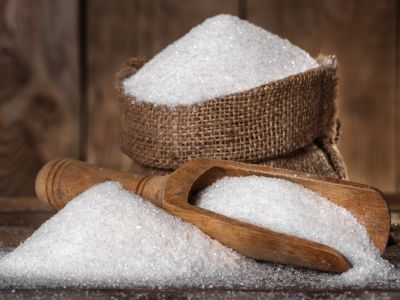Effects of Sugar on Plants
All plants benefit and grow best in nitrogen rich soils. Nitrogen is the basis for green, leafy growth and promotes the healthy uptake of other necessary nutrients. Nitrogen is yielded by composting or rotting organic matter. Sugar is a carbon nutrient and contains no nitrogen. Sugar on weeds has the ability to limit growth in some plants, especially those that are not adaptive to low nitrogen environments. This is because microorganisms in soil are forced to source their necessary nitrogen from soil. This leaves little for weed growth. As such, sugar weed control is possible with direct application to pesky weeds and invasive plants.
Using Sugar to Kill Weeds
Killing lawn weeds with sugar or minimizing garden herbicide use is a natural and potentially effective method of weed control. More research is needed but, thus far, science and environmental trials verify that sugar on weeds can provide an alternative to damaging chemical methods. Using sugar to kill weeds may lead to more economical means of weed control through other items, like sawdust that contains carbon.
How to Use Sugar Weed Control in Gardens
Before you use up your coffee sweetener supply, take a moment to contemplate the types of weeds for which sugar weed control is best suited. Broadleaf and annual weeds succumb to the sugar treatment much better than grasses and perennials. The method is simple. Take about a cup (240 mL.) full, or even a handful, of sugar and sprinkle it around the base of a weed. Take care to avoid other plants and coat the soil thickly over the offending weed’s root zone. Check the weed in a day or two and recoat if the area was saturated or the weed is not showing signs of decline.
Killing Lawn Weeds with Sugar
Leafy, green plants, like grass, require high amounts of nitrogen for best growth. Feeding the lawn with a commercial fertilizer provides the nitrogen, but also adds excessive salt to soil, which causes poor root growth over time. Sugar encourages grass roots to seek nitrogen in soil. This competitive use depletes soil nitrogen for weeds and helps grass flourish and crowd out pest plants. You can use granulated or powdered sugar sprinkled lightly over your lawn or a molasses spray. (Mix molasses at a rate of 1 ¾ cups (420 mL.) to 10 gallons (38 L.) of water in a backpack or manual sprayer.) Evenly coat the lawn and water it in lightly. Don’t over coat or forget to water, as the sugar will attract insects and animals if left on top of the leaf blades. The best time to start sugar weed control is spring when weeds are small and before they go to seed.
